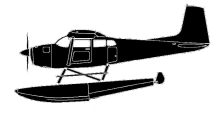
ASN Wikibase Occurrence # 38580
This information is added by users of ASN. Neither ASN nor the Flight Safety Foundation are responsible for the completeness or correctness of this information.
If you feel this information is incomplete or incorrect, you can submit corrected information.
| Date: | Wednesday 5 August 1998 |
| Time: | 16:05 |
| Type: |  Cessna A185F Skywagon |
| Owner/operator: | Taquan Air Service Inc |
| Registration: | N5314R |
| MSN: | 18503030 |
| Year of manufacture: | 1976 |
| Total airframe hrs: | 15000 hours |
| Engine model: | Continental IO-520-D |
| Fatalities: | Fatalities: 1 / Occupants: 3 |
| Aircraft damage: | Destroyed |
| Category: | Accident |
| Location: | Ketchikan, AK -
 United States of America United States of America
|
| Phase: | En route |
| Nature: | Passenger - Non-Scheduled/charter/Air Taxi |
| Departure airport: | Ketchikan Downtown Seaplane Base, AK (5KE) |
| Ketchikan Downtown Seaplane Base, AK (5KE) | |
| Investigating agency: | NTSB |
| Confidence Rating: |
On August 5, 1998, at 1605 Alaska daylight time, a float equipped Cessna A185F airplane, N5314R, was destroyed when it impacted terrain about 24 miles northeast of Ketchikan, Alaska, at position 55 degrees 30.98 minutes North latitude, 131 degrees 01.17 minutes West longitude. The commercial pilot and one passenger sustained serious injuries. The remaining passenger sustained fatal injuries. The flight was operated under 14 CFR Part 135, by Taquan Air Service, Inc., of Ketchikan, as an on-demand sightseeing flight. Visual meteorological conditions prevailed at the time of the accident, and a company VFR flight plan was filed. The flight departed the Ketchikan Downtown Seaplane Base at 1455, on a planned 1.5 hour sightseeing tour of Misty Fjords National Monument. Company dispatchers began attempting to contact the airplane at 1630, and declared the flight overdue at 1655. Pilots in the area of the accident site reported hearing an emergency locator transmitter (ELT) signal on 121.5 MHz. The wreckage was located at 1742.
The pilot told the NTSB investigator-in-charge (IIC) during an interview on August 6, that he parked the airplane with the right wing over the dock, placed the fuel selector valve in the 'LEFT' position to prevent fuel cross-feeding while on the water, and requested the lineman fill the right wing. He told the NTSB IIC he recalled seeing the right tank fuel gauge read full, and the left tank gauge read 1/8 to 1/4 (5 gallons to 10 gallons) when he departed on the accident flight. He said he always does a 'GUMPS' (Gas-Undercarriage-Mixture-Prop) check prior to takeoff. The company wrote in a statement submitted to the NTSB IIC on May 10, 1999, and told the NTSB IIC, that the pilot did not remember placing the fuel valve to the 'LEFT' position during fueling. After about 45 minutes of flight, and one water landing and takeoff, the engine quit while the airplane was at 800 feet msl climbing toward rising terrain. The pilot said he turned on the electric fuel pump, but the engine did not start. He saw the fuel selector valve in the 'LEFT' tank position. He indicated he turned the selector valve to the 'BOTH' position, and turned the airplane 180 degrees toward lower terrain. The engine did not restart and the airplane contacted trees and marshy terrain. Investigation revealed fuel in the right wing tank, no fuel in the left wing tank, and one teaspoon of fuel in the intact fuel lines to the engine. Charted fuel consumption for 45 minutes at a cruise power setting of 2,300 rpm at 23 inches of manifold pressure is 9.4 gallons. The BEFORE TAKEOFF checklist states, in part: '(6) Fuel Selector Valve - BOTH ON, (7) Fuel Quantity Indicators - CHECK QUANTITY.' The pilot stated during interviews with the NTSB, FAA, and Alaska State Troopers, on August 6, and August 7, that he believed the rear seat passenger must have kicked the fuel selector valve to the 'LEFT' position. The NTSB IIC, the FAA coordinator, and the company representative, all sat in the rear seat of a representative Cessna 185 on August 8 and attempted to move the fuel selector to the 'LEFT' position with their feet. None of them were able to move the valve further than 1 inch (12 degrees) to the left of the 'BOTH' position.
Probable Cause: Fuel starvation and the pilot's improper fuel tank selection. Factors associated with the accident were the pilot's failure to follow the pre-takeoff checklist and trees.
Accident investigation:
 |
|
Sources:
NTSB: https://www.ntsb.gov/ntsb/brief.asp?ev_id=20001211X10736
Images:

Photo: NTSB
Revision history:
| Date/time | Contributor | Updates |
|---|---|---|
| 24-Oct-2008 10:30 | ASN archive | Added |
| 21-Dec-2016 19:23 | ASN Update Bot | Updated [Time, Damage, Category, Investigating agency] |
| 13-Oct-2022 11:08 | Captain Adam | Updated [Aircraft type, Operator, Nature, Departure airport, Destination airport, Narrative, Accident report, Photo] |
Corrections or additions? ... Edit this accident description
The Aviation Safety Network is an exclusive service provided by:


 ©2024 Flight Safety Foundation
©2024 Flight Safety Foundation